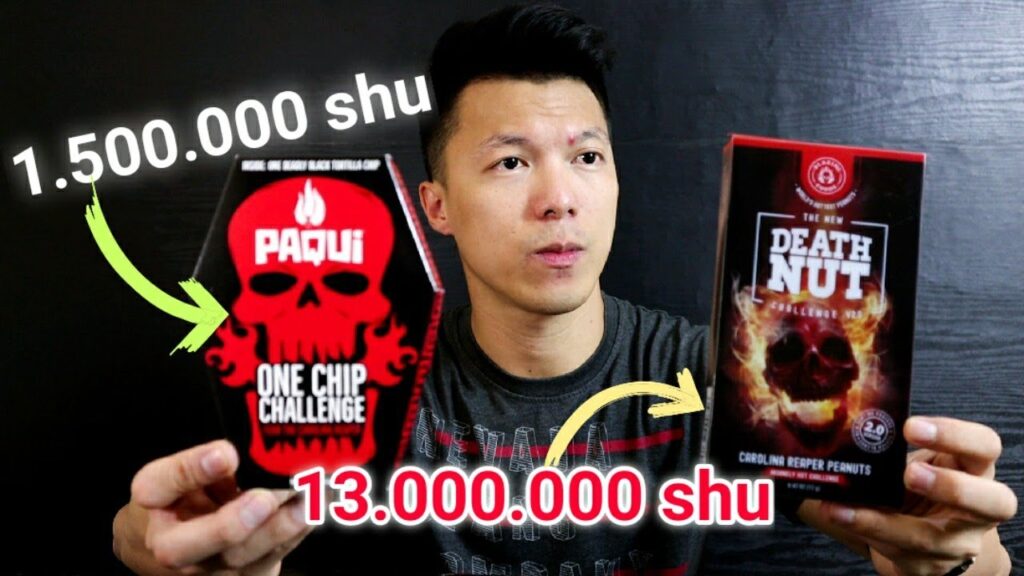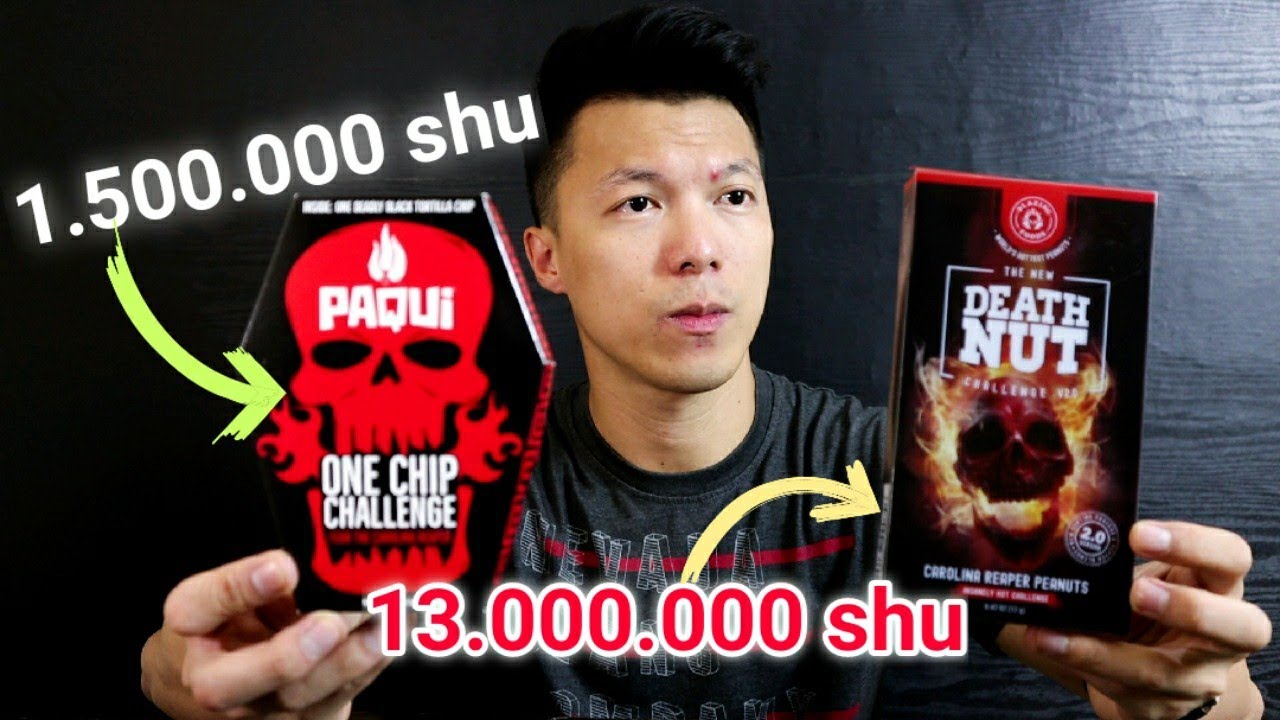
The One Chip Challenge is a viral trend that involves eating an extremely spicy tortilla chip made with some of the hottest peppers in the world.
The challenge has gained immense popularity on social media platforms, with participants recording their reactions to the intense heat.
However, recent incidents have raised serious concerns about the safety of this challenge, including a tragic death linked to the consumption of the chip.
Origins of the One Chip Challenge
Creation of the Challenge
The One Chip Challenge was created by the Paqui chip company as a marketing stunt to promote its spicy chip line. The concept was simple yet effective: eat one extremely hot chip and endure the burn without relief.
Popularity and Viral Spread
The challenge quickly went viral, with influencers and celebrities participating and sharing their reactions online. This virality significantly boosted Paqui’s brand visibility and highlighted the risks associated with the challenge.
Composition of the One Chip
Ingredients and Scoville Scale Rating
The primary ingredients of the One Chip are Carolina Reaper and Scorpion pepper extracts, among the hottest peppers in the world. These peppers have Scoville Heat Units (SHU) exceeding 1.5 million, making the chip one of the spiciest commercially available products.
Manufacturing Process
The chip is made carefully to ensure maximum heat, including drying and grinding the peppers into a fine powder that coats the chip. This process enhances the chip’s intensity and ensures consistency in heat level.
Health Risks and Hazards
Immediate Physical Reactions
Consuming the One Chip can cause immediate and severe reactions, including burning sensations in the mouth and throat, excessive sweating, tears, and gastrointestinal distress. Some individuals may also experience difficulty breathing and chest pain.
Long-Term Health Implications
Repeated exposure to such high levels of capsaicin can lead to long-term health issues, such as gastritis and esophagitis. Individuals with preexisting conditions like asthma or heart disease are particularly at risk.
Vulnerable Populations
Certain groups, including children, the elderly, and individuals with underlying health conditions, are more susceptible to the severe effects of the One Chip Challenge. These populations should refrain from participating in the challenge.
Case Study: One Chip Challenge Death
Incident Overview
The tragic death linked to the One Chip Challenge involved a teenager who experienced severe symptoms shortly after consuming the chip. Despite immediate medical attention, the individual succumbed to the effects.
Medical Findings
Medical examinations revealed that the extreme heat of the chip triggered a severe physiological response, exacerbating underlying health conditions. The specific cause of death was attributed to complications arising from the intense capsaicin exposure.
Response from Authorities
In response to this incident, health authorities and regulatory bodies have warned about the dangers of participating in the One Chip Challenge and urged the public to exercise caution.
Medical Expert Opinions
Insights from Health Professionals
Medical professionals highlight the risk of consuming highly spicy foods, particularly in high concentrations. They advise against participating in such challenges and recommend seeking immediate medical help if severe symptoms occur.
Recommended Precautions
Experts recommend that individuals avoid participating in the One Chip Challenge. For those who choose to proceed, it is crucial to have milk or another dairy product on hand to neutralise the capsaicin and to consume the chip in a safe environment with immediate access to medical care.
Legal and Ethical Considerations
Liability Issues Participating in and promoting the One Chip Challenge can have significant legal ramifications—companies and influencers promoting the challenge could be liable for any harm caused.
Ethical Concerns
Ethically, promoting a challenge that poses significant health risks raises serious questions. Companies and influencers must consider the potential harm to participants and act responsibly.
Impact on Social Media and Public Perception
Role of Social Media in Promoting the Challenge
Social media platforms have played a pivotal role in popularising the One Chip Challenge. The allure of viral fame often overshadows the potential health risks, leading to widespread participation.
Public Reactions and Backlash
Public reaction to the challenge has been mixed. While some view it as harmless fun, others express concern over the health implications and the recent fatality, calling for greater regulation and awareness.
Safety Tips for Participants
Precautionary Measures
Participants should take several precautions if they take the One Chip Challenge. These include not consuming the chip on an empty stomach, having milk or yoghurt available to neutralise the heat, and avoiding touching their face or eyes after handling the chip.
First Aid Tips
If severe symptoms occur, it is essential to seek medical attention immediately. Drinking milk or consuming other dairy products can help alleviate the burning sensation, and over-the-counter medications may reduce inflammation.
When to Seek Medical Help
Participants should seek immediate medical help if they experience difficulty breathing, chest pain, or severe gastrointestinal distress. These symptoms indicate a serious reaction that requires professional medical intervention.
Alternatives to the One Chip Challenge
Safer Spicy Challenges
There are safer ways to enjoy spicy foods without the extreme risks of the One Chip Challenge. Participating in moderated spicy food competitions with appropriate medical oversight can provide a safer alternative.
Community Engagement Ideas
Communities and schools can organise events focusing on spicy foods’ cultural and culinary aspects, emphasising enjoyment and education rather than extreme consumption.
Educational Initiatives and Awareness Campaigns
Current Efforts
Some organisations are working to raise awareness about the risks of the One Chip Challenge through educational initiatives. These efforts aim to inform the public about the potential health hazards and promote safer alternatives.
Recommendations for Future Campaigns
Future campaigns should focus on reaching a broader audience, mainly through social media platforms where the challenge is most popular. Emphasising personal stories and expert opinions can help convey the risks more effectively.
FAQs
Common Questions
- What is the One Chip Challenge?
- Why is the One Chip Challenge dangerous?
- What should I do if I experience severe symptoms after participating in the One Chip Challenge?
Detailed Answers
- The One Chip Challenge involves eating a single tortilla chip made with scorching peppers, specifically Carolina Reaper and Scorpion peppers, and enduring the intense heat.
- The One Chip Challenge is dangerous because it can cause severe physical reactions, including difficulty breathing, chest pain, and gastrointestinal distress, particularly in vulnerable individuals.
- If you experience severe symptoms after participating in the One Chip Challenge, seek immediate medical attention. Drinking milk or consuming other dairy products may help alleviate some symptoms while waiting for professional medical help.


